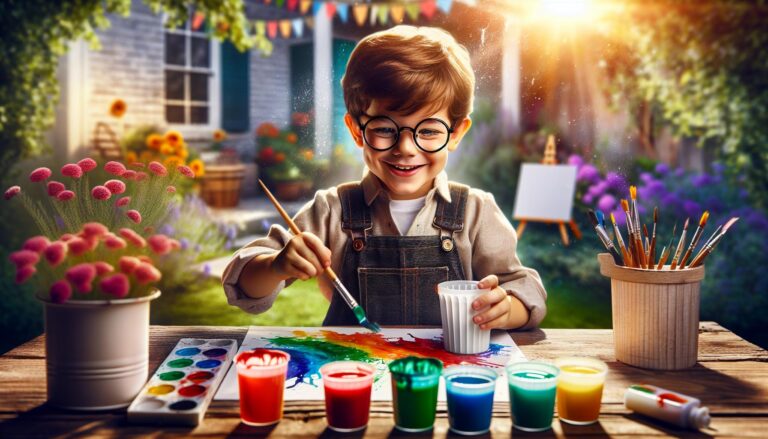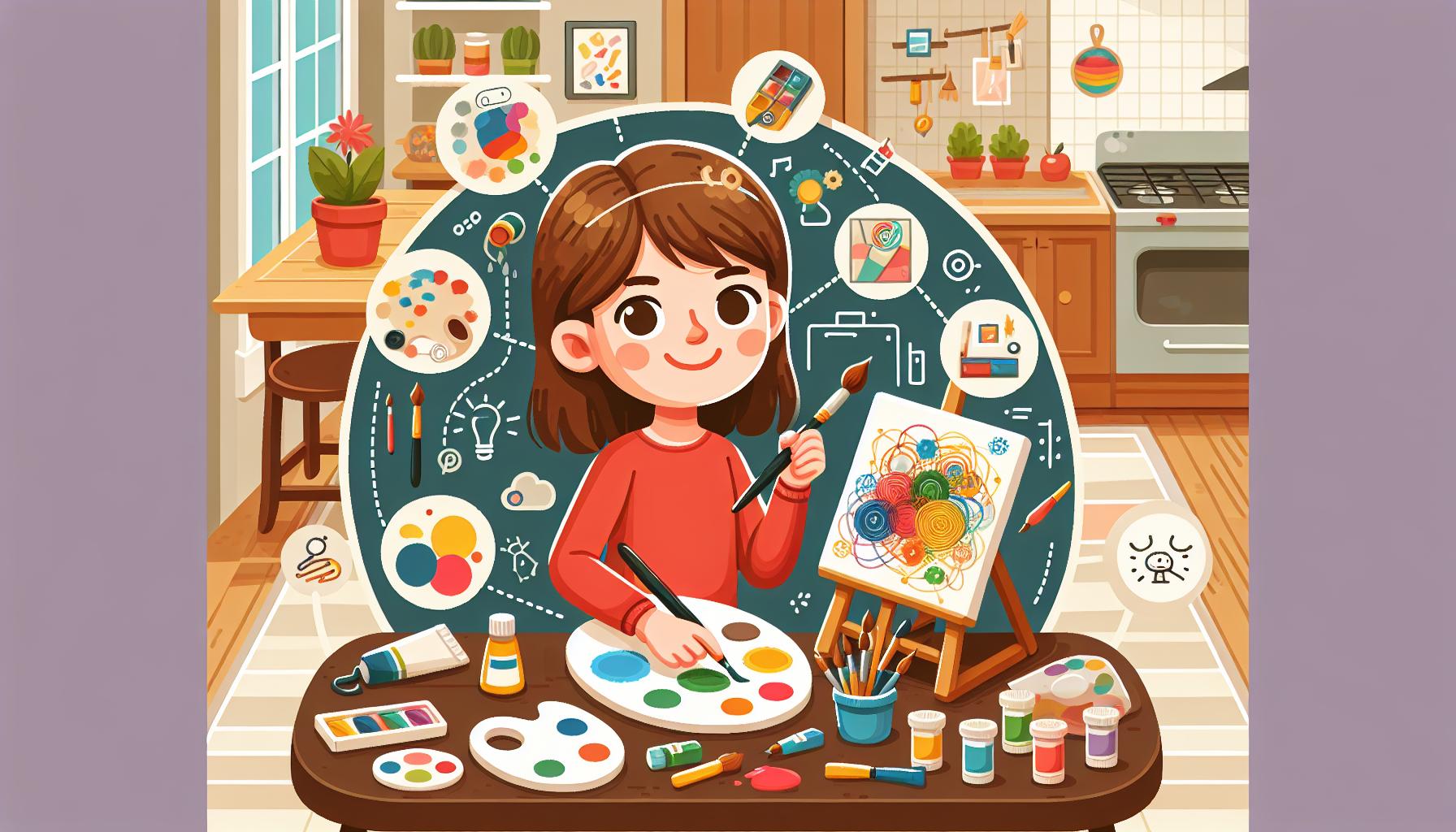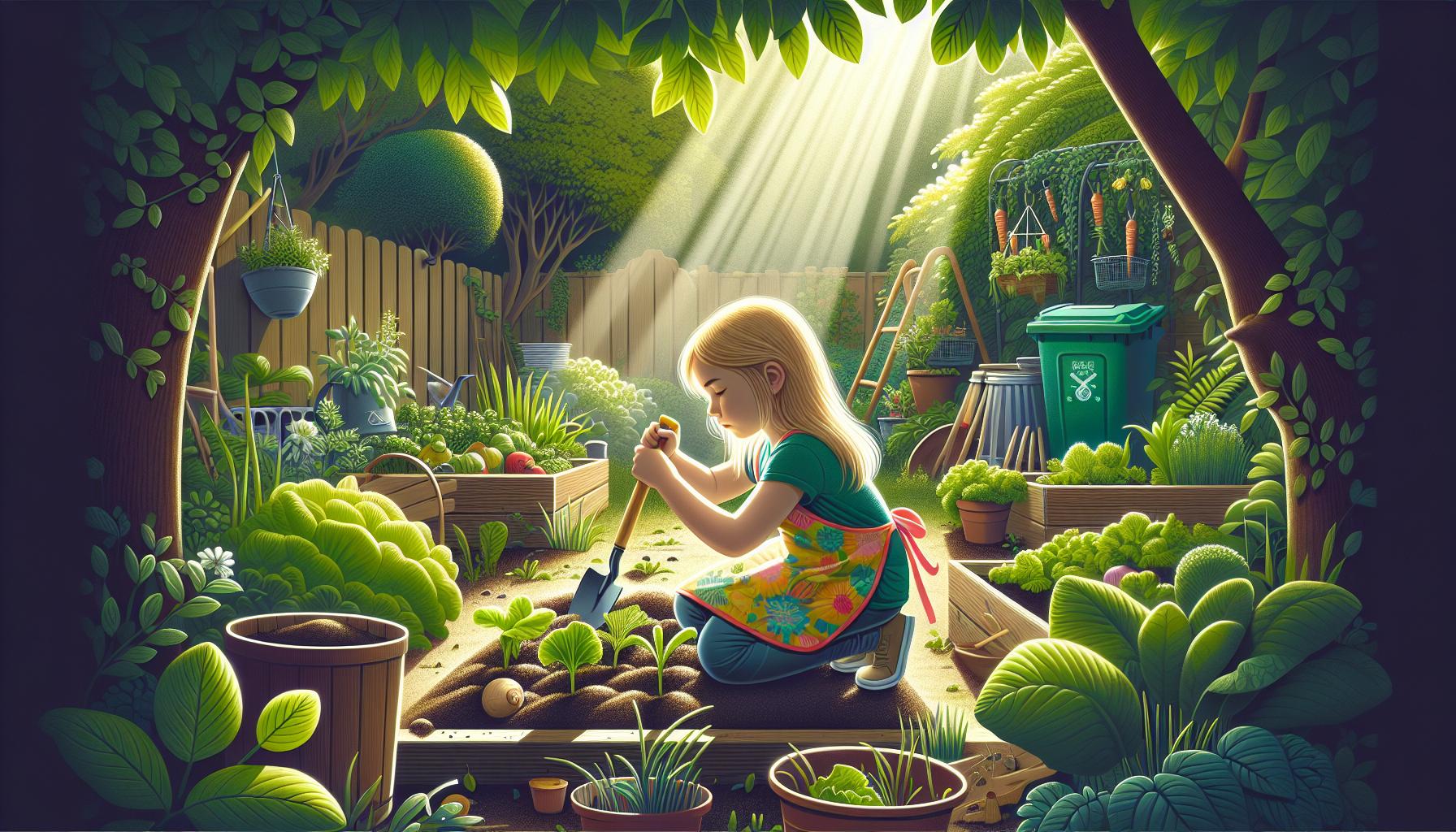
Key Takeaways
- Hands-on homeschooling projects enhance learning by making abstract concepts tangible, strengthening retention, and promoting critical thinking and problem-solving skills.
- Creative arts and crafts projects, such as painting, DIY science models, and handmade decorations, boost motor skills, self-expression, and creativity.
- Science and nature exploration projects like backyard experiments and gardening foster curiosity, observation, and an appreciation for natural phenomena.
- History and literature activities, such as timeline creation, role-playing, and diorama building, bring historical events and stories to life in immersive and engaging ways.
- Technology and engineering challenges, such as coding, building simple machines, or renewable energy experiments, combine innovation with real-world applications.
- Practical life skills projects, including cooking, budgeting, and sewing, prepare children for independence and real-world responsibilities while reinforcing essential skills.
Homeschooling offers a wonderful opportunity to make learning exciting and hands-on. But let’s be honest—coming up with fresh, engaging project ideas can sometimes feel overwhelming. How do we keep our kids curious and motivated while ensuring they’re building important skills?
We all want to create an environment where learning feels natural and fun. Whether it’s sparking creativity, diving into science experiments, or exploring history through interactive activities, the right projects can make all the difference. So, how can we bring more inspiration and variety into our homeschooling journey?
Benefits Of Hands-On Homeschooling Projects
Hands-on projects offer practical learning experiences that make concepts easier to grasp. Instead of relying solely on textbooks, children actively engage with materials, which reinforces their understanding. For example, building a model volcano enhances their knowledge of geology and chemical reactions.
These projects boost critical thinking and problem-solving abilities. By experimenting, tinkering, or constructing, kids discover how to approach challenges logically. Activities like designing a birdhouse promote creativity and foster resourcefulness.
Interactive activities encourage collaboration in multi-child households. Siblings can work together to complete shared projects—such as crafting a family tree—nurturing teamwork and social skills.
Hands-on approaches strengthen retention. Studies reveal that learners retain more information when they actively participate in lessons. Cooking a recipe while learning measurements combines math, science, and life skills in one memorable task.
How can we keep children motivated during long learning sessions? Practical projects energize the homeschooling day, helping kids stay focused and excited about their studies. Integrating these into the curriculum creates a dynamic, enriching environment.
Creative Arts And Crafts Ideas

Hands-on arts and crafts projects ignite creativity while building fine motor skills and self-confidence. These activities offer endless possibilities to engage children and make learning enjoyable. How can you integrate creative projects into your homeschool routine?
DIY Science Models
Incorporating art into science can make complex concepts easier to grasp. Children can construct solar system models with styrofoam balls and paint their planets. For biology, creating 3D cell models from clay or edible materials adds fun and understanding. Models for weather cycles, like water cycle dioramas, provide tangible ways to connect with science topics visually.
Encourage kids to experiment with building small structures like bridges or towers from materials such as popsicle sticks or straws. These projects reinforce engineering basics and problem-solving skills. Keep each project age-appropriate to avoid frustration and foster self-directed discovery.
Art And Painting Projects
Painting projects tap into imagination and help children express themselves. For younger kids, guide them to explore basic techniques like finger painting or sponge stamping. Older children could delve into watercolor landscapes, acrylic portraits, or abstract art inspired by famous artists.
Consider integrating subjects your children are studying. For instance, they might illustrate historical events or recreate artwork from different cultural traditions. This approach deepens understanding while teaching essential art concepts.
Handmade Gifts And Decorations
Teaching kids to make meaningful gifts enhances their creative skills and sense of accomplishment. Seasonal crafts, like holiday ornaments or greeting cards, can tie into lessons about traditions and celebrations. For birthdays, children could design personalized photo frames or necklaces.
Home decorations provide another avenue for creative exploration. Encourage children to make items like wall art, wreaths, or table centerpieces. Using recycled materials introduces sustainability concepts while promoting innovative problem-solving.
Science And Nature Exploration Projects

Engaging children with science and nature can spark curiosity and deepen their understanding of natural phenomena. Hands-on projects encourage exploration while fostering critical thinking and observation skills.
Backyard Experiments
Experimenting in the backyard introduces kids to real-world science. Observe chemical reactions by creating a baking soda and vinegar lava eruption. Test water absorption by comparing different soil types. Build a simple water filtration system using sand, gravel, and charcoal to show how impurities are removed. These activities demonstrate scientific principles and invite questions like, “Why does this happen?” or “What can we try next?”
Gardening Activities
Gardening combines observation, biology, and environmental science. Grow seasonal vegetables or herbs and track their growth stages. Test soil pH using natural ingredients like vinegar and baking soda. Create a compost bin to teach decomposition and eco-friendly waste management. How can we use gardening to connect lessons about ecosystems, plant life cycles, or sustainability with enjoyable outdoor learning?
History And Literature Projects
Hands-on history and literature projects can make learning immersive and engaging. They allow children to connect emotionally and intellectually with the topics they study. Let’s explore ideas that blend creativity and education in meaningful ways.
Timeline Creations
Building timelines helps children visualize historical events and their sequence. Start by selecting a specific period, like the American Revolution or the Renaissance. Include critical dates like major battles, discoveries, or cultural milestones. Use index cards, craft paper, or even digital tools to design the timeline. Encourage kids to add illustrations or short descriptions for each event, enhancing comprehension. How might creating a detailed timeline deepen your child’s understanding of cause and effect in history?
Literature-Based Role-Playing
Role-playing characters from books brings stories to life. Choose a novel such as “To Kill a Mockingbird” or “The Odyssey” and assign roles for kids to act out dialogue or key scenes. This approach strengthens their grasp of character development, themes, and emotions woven into the text. Enhance learning by integrating costumes, props, or setting up the activity in a matching environment. Could stepping into a character’s shoes make complex literature feel more relatable and impactful?
Historical Dioramas
Constructing dioramas offers a hands-on way to study historical settings. Pick an event like the signing of the Declaration of Independence or a location such as an ancient Roman marketplace. Use art supplies, recycled materials, or natural elements to build a miniature scene representing that moment in history. Encourage attention to detail, including figures, tools, or architecture representative of the time. Would designing a diorama bring a period of history to life in ways a textbook might not?
Technology And Engineering Challenges
Technology and engineering projects ignite curiosity and develop problem-solving and innovation skills. These challenges can inspire learners through creative, hands-on activities while exploring practical applications of scientific concepts.
Coding And Robotics Projects
Coding and robotics teach logical thinking and creativity through practical application. Students can start with beginner-friendly platforms to write simple programs, such as creating interactive stories or games. For robotics, assembling pre-made kits to build small robots capable of basic tasks—like following a line or avoiding obstacles—illustrates engineering principles. How might integrating robotics into daily lessons make learning exciting and challenge critical thinking?
Advanced learners can design custom robots or develop software integrations for smart home devices. This allows older students to explore topics like AI and machine learning. Coding projects for creating mobile apps or simulations provide further opportunities to solve real-world problems.
Building Simple Machines
Building simple machines helps students understand basic physics and mechanics. Constructing tools such as levers, pulleys, or inclined planes with household items offers an immediate, hands-on experience. These concepts are foundational to engineering and explain force, motion, and energy transfer. What kinds of machines could children build to make everyday tasks easier?
Challenge students to assemble Rube Goldberg machines, combining several simple machines to perform a complex task. These projects develop creativity by encouraging participants to approach problems from multiple perspectives.
Renewable Energy Experiments
Renewable energy experiments introduce environmental awareness through engaging activities. Building small-scale wind turbines or solar ovens demonstrates sustainable energy principles. Students can measure the efficiency of different energy sources, examining conditions like sunlight angle or wind strength. Could testing these methods help children think critically about resources and sustainability?
For older learners, designing energy-efficient models of homes or cars can tie engineering to real-world applications. Using recycled materials for these experiments can further emphasize the importance of environmental conservation.
Practical Life Skills Projects
Preparing children for real-world tasks builds confidence and independence. Hands-on life skills projects provide practical knowledge while making learning engaging.
Cooking And Baking
Teaching cooking and baking introduces kids to essential kitchen skills. Start with simple recipes like muffins or pancakes to practice measuring, mixing, and timing. Use activities such as planning a family meal to teach meal preparation and nutritional awareness. Projects involving baking can include basic science concepts. For example, explain why baking soda reacts in recipes or discuss the purpose of yeast in breadmaking. These activities improve fine motor skills, foster attention to detail, and encourage creativity.
Budgeting And Financial Planning
Involving children in budgeting projects promotes responsible money management. Introduce concepts such as saving, spending, and setting goals through exercises like tracking a weekly allowance or planning the cost of a family outing. Use tools like visual charts or worksheets to simplify learning. For older children, practice creating a mock monthly budget to understand expenses and savings. These projects develop math skills and financial literacy, encouraging smart decision-making regarding money.
Basic Sewing And Crafting
Sewing and crafting allow children to develop creativity and practical skills. Start with sewing activities like stitching buttons or creating simple fabric projects such as pillow covers. Crafting can encompass projects like making bookmarks, simple home decorations, or repairing worn items. Provide opportunities for using recycled materials to teach resourcefulness and sustainability. These projects build fine motor skills, patience, and a sense of accomplishment through hands-on learning.
What life skills projects resonate with your family’s learning approach?
Conclusion
Homeschooling offers endless opportunities to make learning exciting, meaningful, and hands-on. By incorporating creative projects across various subjects, we can inspire curiosity, foster critical skills, and nurture a lifelong love for learning. Whether it’s building, experimenting, crafting, or exploring, these activities help transform education into an engaging journey for both children and parents.
Let’s continue to embrace the flexibility and creativity that homeschooling provides. With a little imagination and effort, we can create a dynamic learning environment that keeps our children motivated while preparing them for the future.
Frequently Asked Questions
What are the benefits of hands-on projects in homeschooling?
Hands-on projects make learning more engaging and practical. They help children retain information better, develop critical thinking, and enhance creativity. By actively participating in activities like science experiments or model-building, kids grasp concepts more effectively and stay motivated.
How can I make homeschooling more engaging for my children?
Incorporate creative projects like DIY art, science experiments, and interactive history activities. Focus on hands-on learning to keep subjects exciting and relatable. Tailor activities to your child’s interests for a personalized and enjoyable experience.
What are some examples of educational hands-on projects?
Examples include building model volcanoes, constructing solar system models, creating historical dioramas, coding simple programs, and making handmade crafts. Gardening or renewable energy experiments are also excellent choices for combining fun with learning.
How do hands-on projects improve information retention?
Children remember more when they actively engage with materials. For instance, building a model or conducting an experiment strengthens the connection between concepts and practical applications, making the learning experience memorable.
How can I integrate art into homeschooling subjects?
Art can be used to illustrate historical events, create 3D models for science, or even make story-based artwork. Painting, crafting, and designing handmade gifts also boost creativity while connecting art to subjects like history or literature.
Why is science exploration important in homeschooling?
Science exploration sparks curiosity and helps children understand natural phenomena through observation and interaction. Activities like backyard experiments or building water-filtration systems teach basic principles and encourage inquiry-based learning.
How can homeschooling promote collaboration between siblings?
Group projects, like building small structures, role-playing historical events, or creating family gardening spaces, encourage teamwork, problem-solving, and collaboration. These activities make learning fun and foster positive sibling connections.
What life skills can homeschooling teach through hands-on activities?
Homeschooling can teach skills like cooking, budgeting, sewing, and crafting. These activities help children become self-sufficient while applying academic concepts like math and science in real-life scenarios.
Are technology and engineering suitable for homeschooling projects?
Yes, technology and engineering projects, such as robotics, coding, and building simple machines, teach logical thinking and problem-solving skills. These activities also introduce children to important STEM concepts and real-world applications.
How can I teach sustainability through homeschooling?
Introduce projects like gardening, creating recycled crafts, or building renewable energy models. These activities help kids understand ecosystems, sustainability, and environmental stewardship in a hands-on and interactive way.

